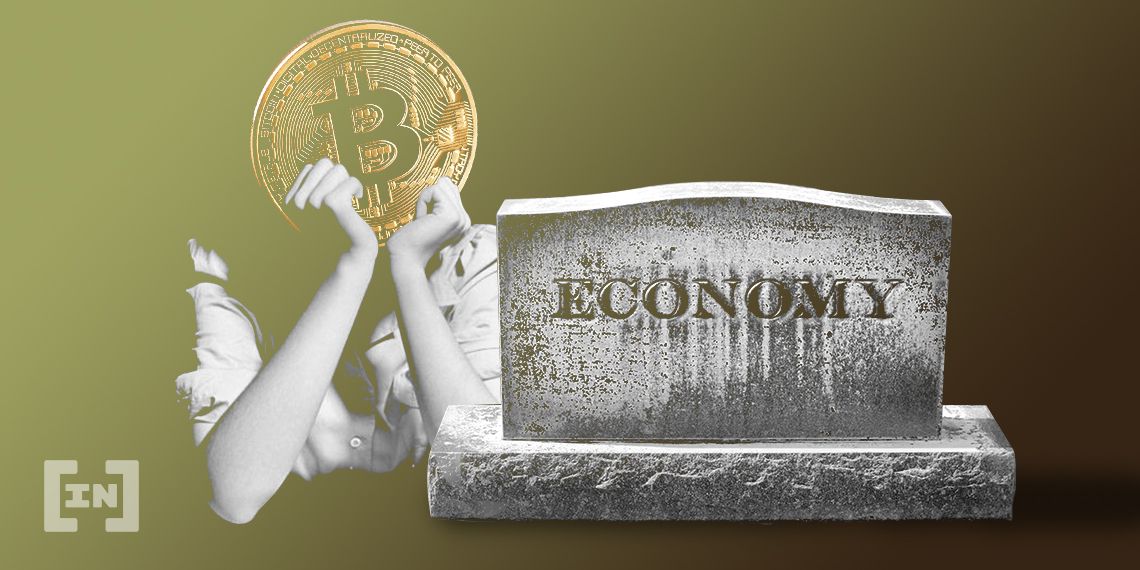The shrinking global economy has all the elements of a deflationary shock—one which hasn’t been seen in decades.
There has been much press about the incessant printing of fresh USD happening at the Federal Reserve. Some worries are warranted; the Fed, after all, has been issuing new currency in record amounts. It even tried to calm fears by arguing it has an “infinite amount of cash.”
Although one would expect a possible inflationary spiral, the real threat may be a deflationary shock.

Dangerous Deflation Territory
With much of the world locked down to fight the pandemic, Bloomberg is reporting that the most likely scenario is a deflationary spiral. Prices for everything, from oil to copper to food have dropped drastically since the lockdowns began. As Joseph Lupton, global economist at JPMorgan Chase, told Bloomberg: “a powerful disinflationary tide is now rising.” [Bloomberg] Although this may, on the surface, seem good for consumers, it really is indicative of a worsening economic situation. With record layoffs, consumers are lacking the purchasing power they once had. Therefore, most cannot even enjoy the low prices. As a result, most businesses are seeing their profits plummet. That is the essence of today’s deflationary spiral—and the declining consumer confidence index is evidence to this fact. The result of the deflationary crisis will be multi-fold: companies may postpone investments because of limited profitability. Households will spend less due to less purchasing power and in anticipation of lower prices. Debt will become more expensive for governments and the private sector. With interest rates by U.S. Federal Reserve already at rock-bottom, monetary policy also has its hands tied.So Much for Inflation
So much talk in the cryptocurrency industry has been centered around the Federal Reserve’s endless money-printing. It is, of course, significant—as BeInCrypto reported recently, the Fed is printing some $60 million in new currency every minute. However, given today’s depressed global demand outlook, an inflationary crisis seems unlikely. It is instead profitability which will most likely suffer and render economic growth anemic for the coming years, if this lockdown situation continues. This is not to say that inflation won’t rear its ugly head in the coming years. However, in the short-term, the dollar does not seem on the brink of collapse; instead, it is the world’s businesses that are on the brink of bankruptcy as investors flee to dollars to ride the storm out. It remains to be seen how Bitcoin will respond to this unique crisis, but as of now, bullish momentum is picking up. At the time of writing, the leading cryptocurrency broke past the $7,000 resistance level.Disclaimer
In adherence to the Trust Project guidelines, BeInCrypto is committed to unbiased, transparent reporting. This news article aims to provide accurate, timely information. However, readers are advised to verify facts independently and consult with a professional before making any decisions based on this content. Please note that our Terms and Conditions, Privacy Policy, and Disclaimers have been updated.

Advertorial
Advertorial is the universal author name for all the sponsored content provided by BeInCrypto partners. Therefore, these articles, created by third parties for promotional purposes, may not align with BeInCrypto views or opinion. Although we make efforts to verify the credibility of featured projects, these pieces are intended for advertising and should not be regarded as financial advice. Readers are encouraged to conduct independent research (DYOR) and exercise caution. Decisions based on...
Advertorial is the universal author name for all the sponsored content provided by BeInCrypto partners. Therefore, these articles, created by third parties for promotional purposes, may not align with BeInCrypto views or opinion. Although we make efforts to verify the credibility of featured projects, these pieces are intended for advertising and should not be regarded as financial advice. Readers are encouraged to conduct independent research (DYOR) and exercise caution. Decisions based on...
READ FULL BIO
Sponsored
Sponsored
